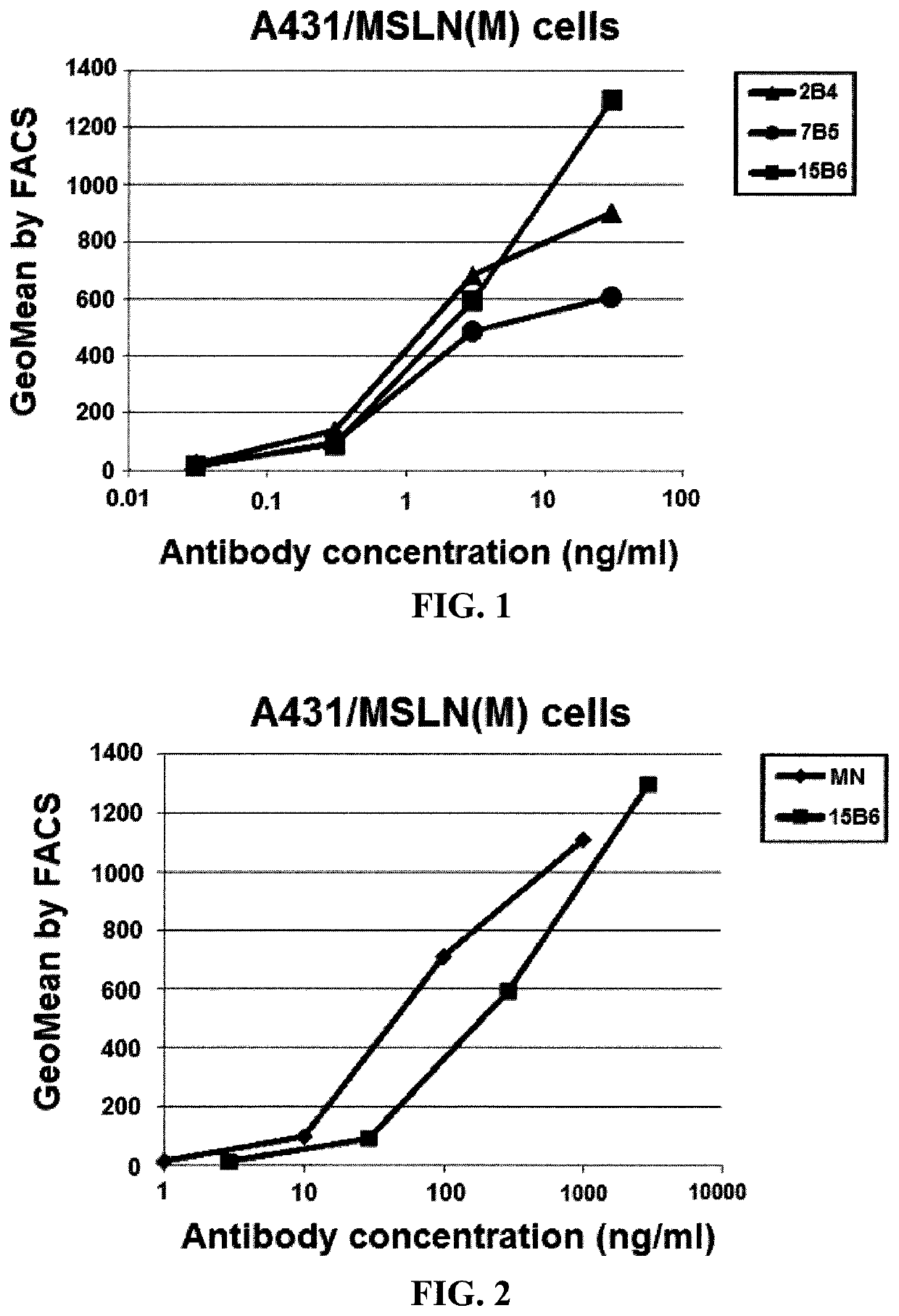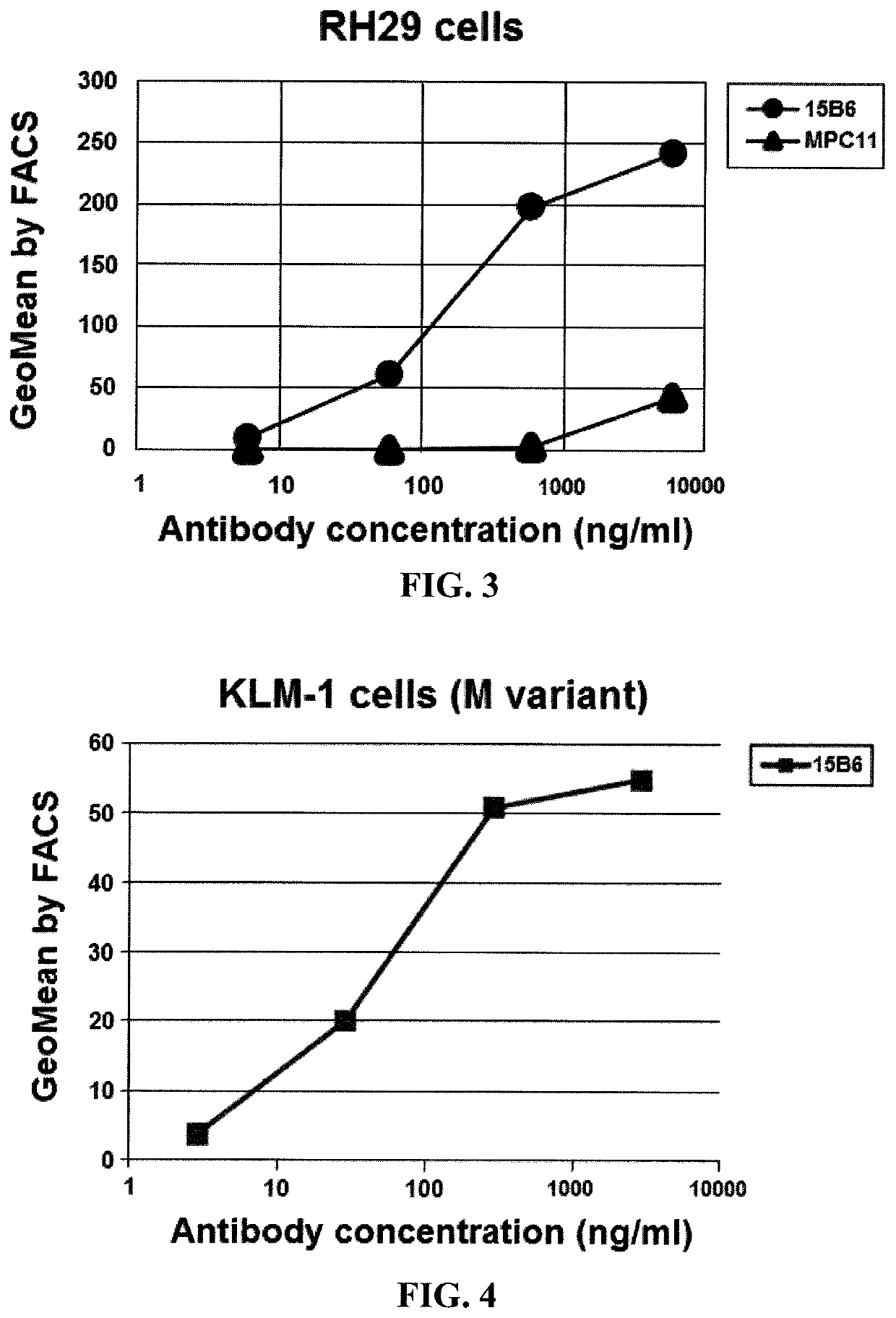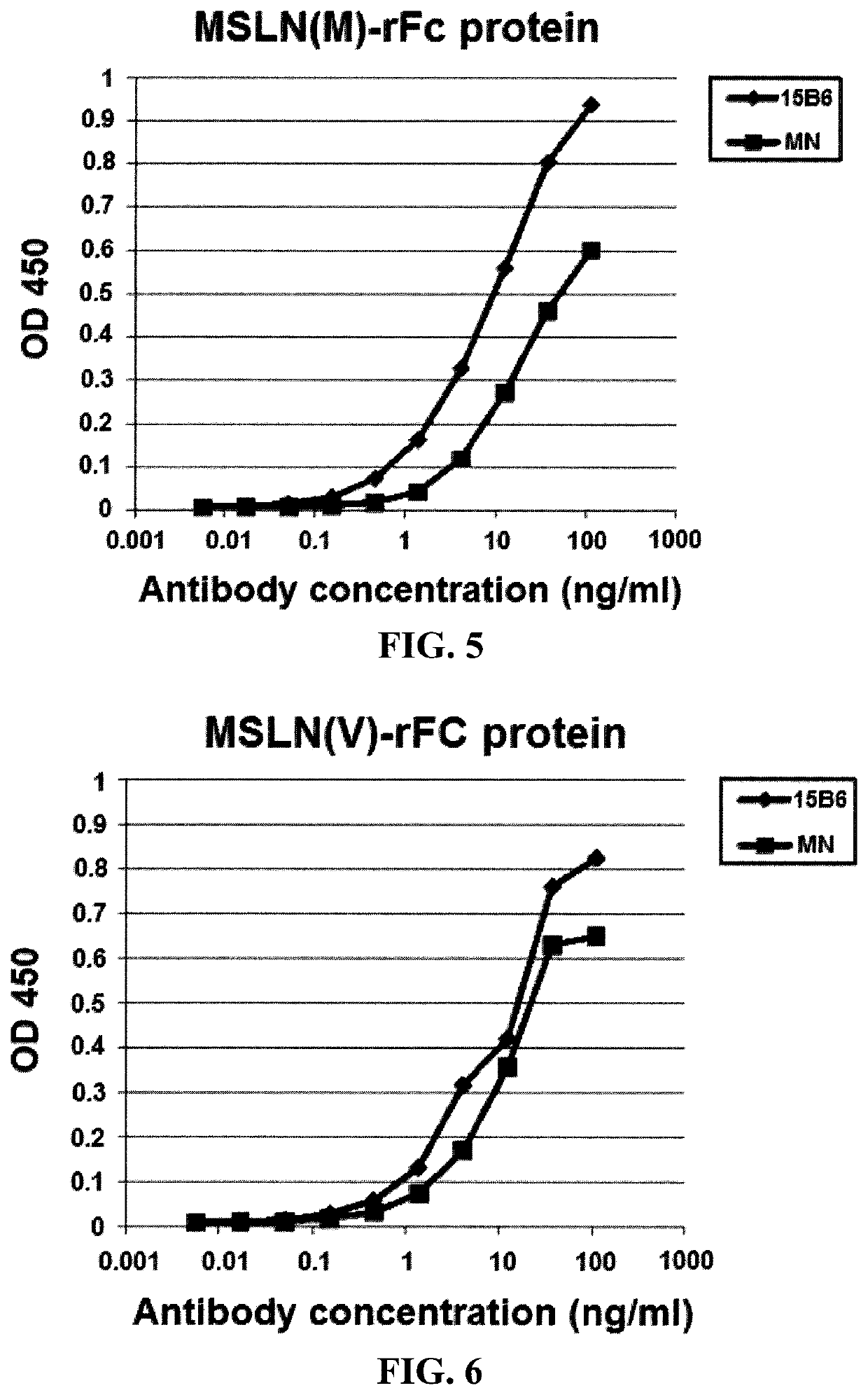Anti-mesothelin polypeptides and proteins
a technology of mesothelin and polypeptides, applied in the field of polypeptides or proteins, can solve the problems of poor prognosis of many cancers
- Summary
- Abstract
- Description
- Claims
- Application Information
AI Technical Summary
Benefits of technology
Problems solved by technology
Method used
Image
Examples
example 1
[0130]This example demonstrates that the inventive antibodies bind to mesothelin IPNGYLVLDLSMQEALS (SEQ ID NO: 1).
[0131]The amino acid sequences (peptides) that remain associated with the cell membrane when mesothelin is shed were determined to be: 587-LVLDLSMQEALS-598 (SEQ ID NO: 58) and 592-SMQEALS-598 (SEQ ID NO: 60). The S-598 is attached to phosphatidyl inositol.
[0132]To make antibodies to the region of mesothelin that is left behind when mesothelin is released and also to the TACE cutting sites, a peptide C-582-IPNGYLVLDLSMQEALS-598 (SEQ ID NO: 1) was made. This peptide contains the amino acids that are positioned close to the membrane as well as the amino acids making up the TACE cleavage sites. A cysteine was added at the amino terminus to allow conjugation to carrier proteins used for immunization of mice.
[0133]A keyhole limpet hemocyanin (“KLH”)-peptide conjugate was prepared and used to immunize Balb / C mice. The mice developed antibodies which reacted with native human me...
example 2
[0136]This example demonstrates that the antibodies of Example 1 bind to mesothelin on A431 / M cells.
[0137]Binding assays were conducted with A431 / M cells using FACS. A431 / MSLN(M) cells were transfected with a MSLN(M) expression plasmid. Cells (106) were incubated with monoclonal antibodies at concentrations ranging from 0.01 to 100 ng / ml for one hour. After the cells were washed, anti-mouse IgG-PE conjugates were added. The PE signal was detected and measured in Geometric Mean values by FACS. The results are shown in FIG. 1 and indicate that the 2B4, 7B5, and 15B6 antibodies of Example 1 bind mesothelin on A431 / M.
example 3
[0138]This example demonstrates that the antibodies of Example 1 are specific for the carboxyl (C) terminus of mesothelin.
[0139]The monoclonal antibodies of Example 1 were also tested for binding to the AB1-L9 cell line, which was transfected with a plasmid encoding a portion of mesothelin (MSLN) attached to a mouse transferrin receptor (“TFR”) membrane spanning region and is missing the sequences in the peptide used for making the hybridomas. This transfected gene contains mesothelin (296-585) attached to TFR transmembrane domain LCFAAIALVIFFLIGFMSGYLGYG (SEQ ID NO: 64). Although the expression of mesothelin in transfected cells was confirmed by MN (control) antibody, none of the monoclonal antibodies bound to the AB1-L9 cell, indicating that they are specific for the C terminus of mesothelin (residues 584-598). These data indicate that the antibodies of Example 1 are specific for the C terminus of mesothelin.
PUM
| Property | Measurement | Unit |
|---|---|---|
| concentrations | aaaaa | aaaaa |
| concentrations | aaaaa | aaaaa |
| temperatures | aaaaa | aaaaa |
Abstract
Description
Claims
Application Information
 Login to View More
Login to View More - R&D
- Intellectual Property
- Life Sciences
- Materials
- Tech Scout
- Unparalleled Data Quality
- Higher Quality Content
- 60% Fewer Hallucinations
Browse by: Latest US Patents, China's latest patents, Technical Efficacy Thesaurus, Application Domain, Technology Topic, Popular Technical Reports.
© 2025 PatSnap. All rights reserved.Legal|Privacy policy|Modern Slavery Act Transparency Statement|Sitemap|About US| Contact US: help@patsnap.com



